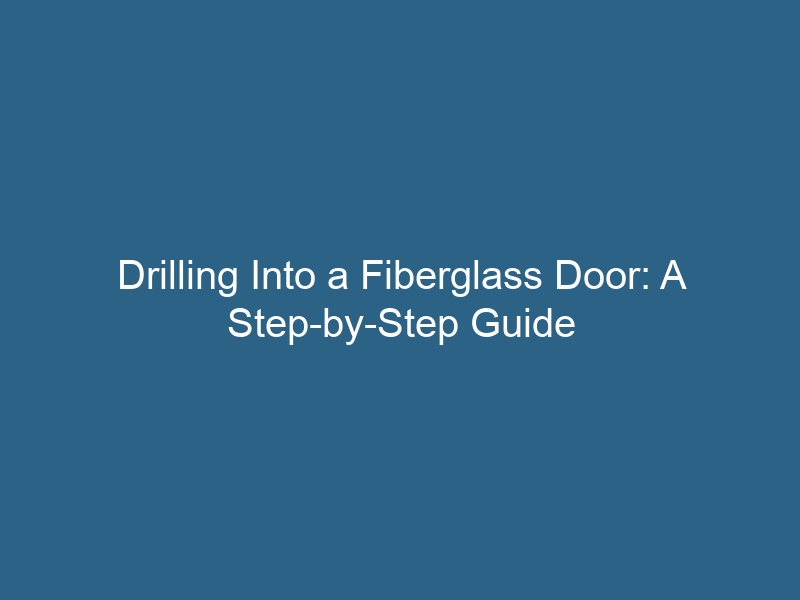Quck answer
To drill into a fiberglass door, follow these steps:
1. Gather the necessary tools: a drill, drill bits suitable for fiberglass, masking tape, and a marker.
2. Choose the desired location for the hole and mark it with the marker.
3. Secure the masking tape over the marked area; this helps prevent the fiberglass from cracking or splintering.
4. Select a drill bit suitable for fiberglass and insert it into the drill.
5. Hold the drill perpendicular to the door and apply gentle pressure as you begin drilling.
6. Slowly increase the drill speed, being careful not to apply too much pressure, as this may damage the fiberglass.
7. Continue drilling until you reach the desired depth.
8. Remove the masking tape and clean any debris from the hole.
Remember to wear safety goggles and work in a well-ventilated area when drilling into fiberglass.
Fiberglass doors are a popular choice for their durability and lightweight nature compared to other door materials. If you want to mount blinds or other accessories on your fiberglass door, you’ll need to drill screw holes. While fiberglass is tougher and stronger than wood, it can still be drilled into with wood drill bits. However, keep in mind that fiberglass can quickly dull drill bits, so pilot holes are often necessary for holes larger than 1/8 inch.
Step 1: Marking the Drill Holes
Using a tape measure and a pencil, mark the exact spots where you want to drill the holes. Double-check your measurements to ensure accuracy.
Step 2: Creating Indents
Take a large nail and place its point on each mark. Lightly tap the nail with a hammer to create an indent in the fiberglass. This will help guide the drill bit to the desired drilling point.
Step 3: Pilot Holes
Put on safety glasses and use an electric drill to create pilot holes on the marks. These pilot holes should be half the size of the final holes. To prevent drilling through both sides of the door, wrap the drill bits in masking tape, leaving only 1/2 inch of the tip exposed.
Step 4: Final Drilling and Countersinking
Using the electric drill, enlarge the pilot holes to the final size. To ensure that the screw heads sit flush with the fiberglass surface, use the appropriate size of countersink drill bit to create a countersink for each hole.


